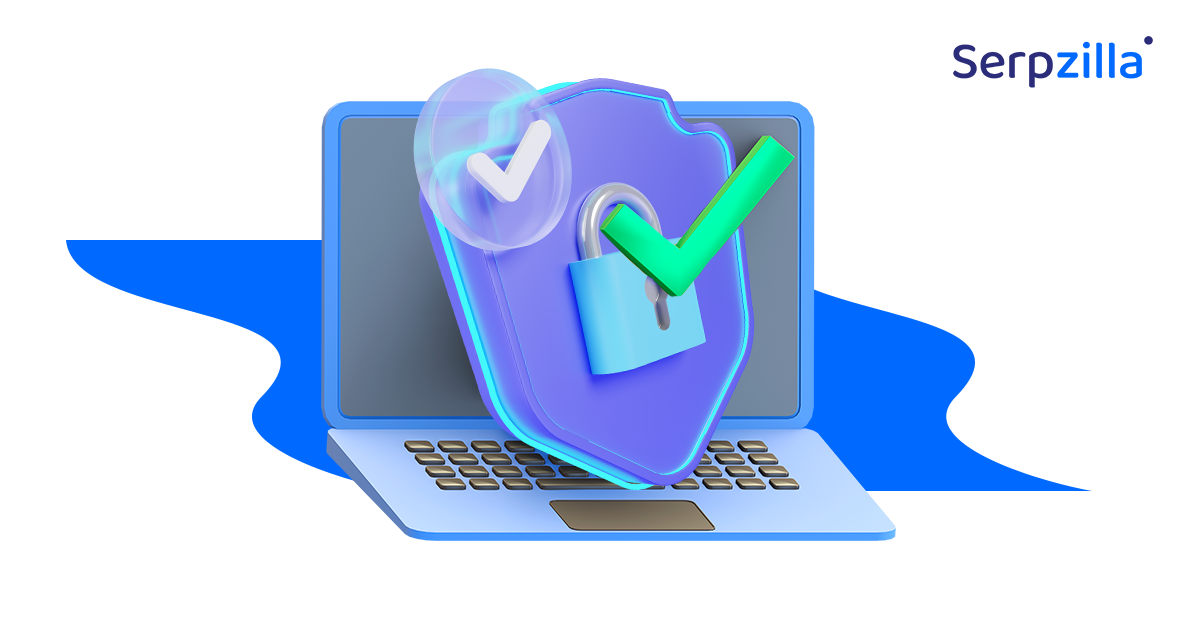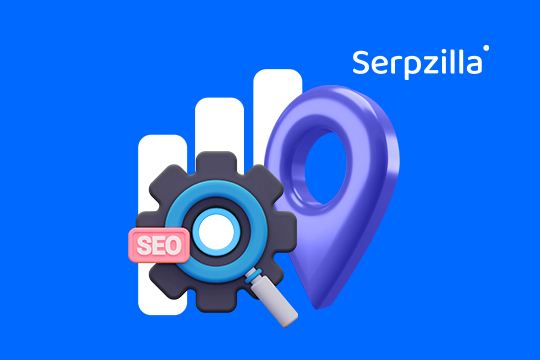Widely used AI has only been with us for a few years, but it’s already safe to say that it has revolutionized many domains, SEO, content marketing and particularly, copywriting being some. Here are some important statistics to prove the point:
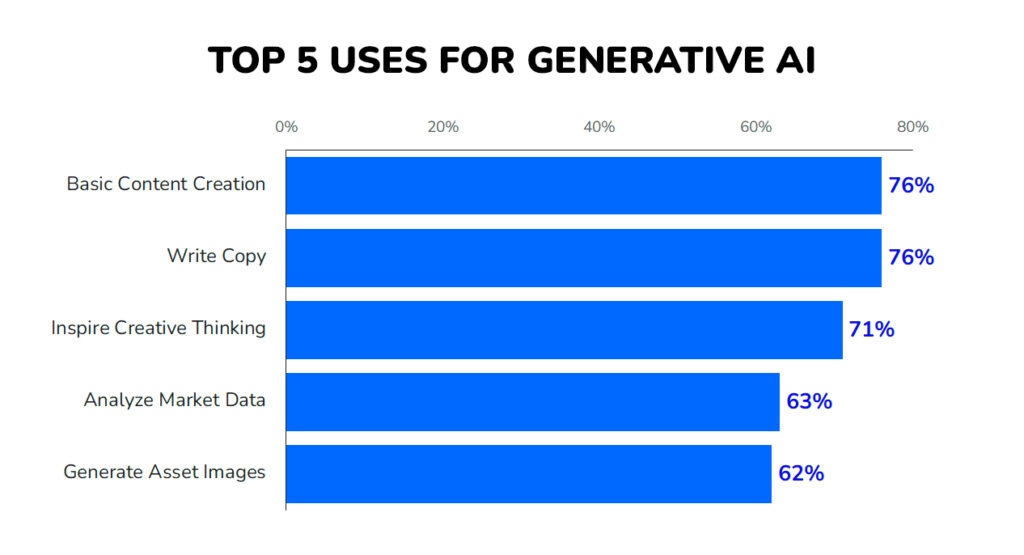
However, the use of AI comes with a set of controversies and issues, from privacy, to trustworthiness and practical value of such content. In this article, we will take a closer look at how AI can help you in your daily textual content tasks and review best tools for AI-powered copywriting.
How AI Copywriting Tools Work
Today, expanding your digital footprint becomes key to making yourself visible online, to make users more aware of your brand, to coming into contact with your audience across multiple touchpoints. However, this means a huge increase in content production and its speed. It almost has to be put on an assembly line, but has to stay quality, unique, engaging, diverse and relevant. Preferably, without hugely expanding the headcount of your copywriting team.
Even if we set actual creative writing aside, there’s a ton of prep work such as research, analysis, planning that has to be done. Top-notch AI tools seem to fit the bill perfectly.
Machine Learning and NLP (Natural Language Processing)
These tools learn over time and can be ‘trained’, facilitating gradual and constant improvement for particular tasks. NLP allows AI to understand and generate human language, becoming more and more nuanced. It can pick up not just on grammar and semantics, but also on wordplay, humor, tone and sentiment, making the output more and more human-like.
How AI Generates and Optimizes Content
Deep learning and neural networks allow AI to process a massive array of existing contents, create and master speech patterns, logic and cause-effect connections. Refined AI tools are highly sensitive to prompts, so a well-crafted prompt can return an output that is styled, structured and populated with data according to a very precise input request.
AI tools are also capable of optimizing content by adding keywords, suggesting readability improvements, checking grammar, spelling and style. They can also help you align your text with various platform trends by altering the tone and style.
Common Use Cases for AI Copywriting (Ads, Blogs, Social Media, etc.)
AI-generated text is most commonly used in cases where the quality and uniqueness of the content matters less than its informative or promotional value. It could be ads, social media posts that follow an established pattern, marketplace descriptions. A lot of such text is produced in bulk and AI can greatly help automating and streamlining the process.
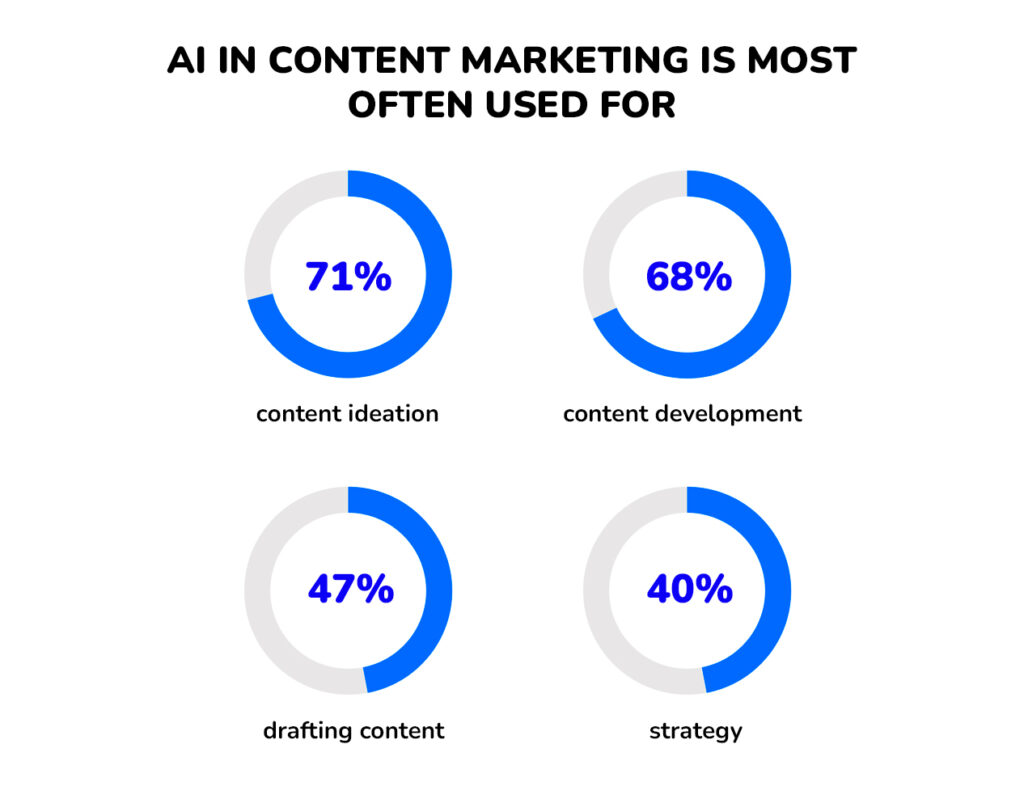
It is clear that the amount of content-related activities and SEO-related activities is growing. In this graph from Siegemedia, you can see how significantly the AI usage rates have grown in 2024 among content marketers.
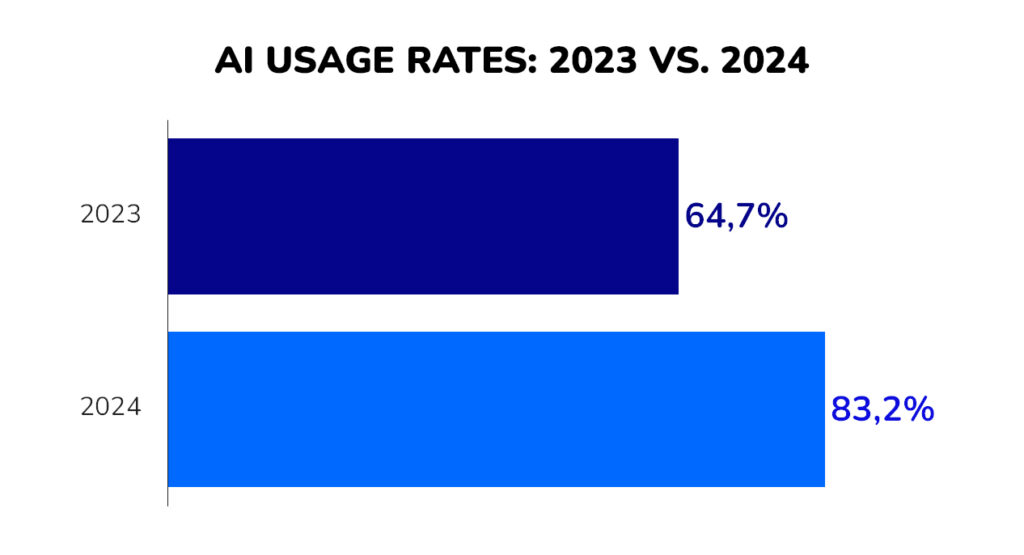
Key Benefits of Using AI Copywriting Tools
- Help with Ideation
Google’s John Mueller recommends using AI for new content ideas. Human mind is a flexible thing, but coming up with new ideas usually requires a very high level of watchfulness and a ton of time spent in observation and processing of all sorts of information.
AI tools can spin new ideas and offer new angles of looking at familiar things instantly. This can significantly cut the prep time for content creation.
- Scale content production without quality loss
Quick translation, crafting content using well-worn patterns, such as emails and sales item descriptions, adapting content for another platform are all tasks copywriters do on a regular basis. Modern AI tools can handle such tasks with relatively little human supervision and editing.
- Save Time and Resources
According to Statista, data management processes are most likely to benefit from AI automation, with around 90% of data processing and collecting being AI-managed. Pareto principle applies to copywriting very well: about 80% of time a copywriter spends on tasks other than writing. With tasks like data collection and processing automated by AI, a huge amount of time and resources is being freed up.
AI may lack in terms of creative writing, but it handles technical tasks very well. If you need to add keywords with precision, break the text down for better structure, carry out a readability analysis, AI works great for such tasks.
Limitations and Challenges of AI Copywriting
- Google Pessimizes AI-generated Content
With the latest Google Core updates, a log of weight is given to content quality and uniqueness when Google calculates its SERP. This means, if you use AI-generated content in your SEO ‘as is’, you have a fair chance of being penalized by Google.
The marginal share of AI content in a piece of writing that doesn’t raise any red flags for Google is 30%. However, the recommended level is 15-20% tops. You can use tools like zeroGPT to test your text for AI content.
- Lack of Creativity and Human Touch
Most people recognize an AI-generated image after they have seen a dozen of AI-generated images and know what they are. People’s reaction to AI-generated images ranges from indifference to aversion.
Platforms like Facebook and Instagram even went as far as including ‘content is AI-generated’ in their report reasons.
AI in text is a little harder to pinpoint, but when people read an AI-generated text, they report that ‘something is off’ or ‘something doesn’t feel right’ or ‘the speech feels stunted’. In fact, there are several factors that give AI right away, and most users are able to recognize AI in text with a naked eye after reading a few similar texts.
- Bulky, complex language.
- Similar cause-effect and logic for various texts. For instance, an AI-generated expert article will have a typical structure, lexic connectors and logic.
- Certain giveaway turn of phrases: if you ever come across an article which starts like
In a rapidly evolving and competitive SEO landscape, crafting a robust link building strategy is crucial/vital/essential – know it was most probably AI-generated.
Risk of Contextual or Nuance Errors
One thing AI still lacks is nuanced approach to context. Usually, it’s subtle things that stand between a text and a great text. AI is yet to bridge that gap. Silly mistakes widely used AI tools make in their outputs have long become memes. A simple example is translation errors done by AI because semantic and situational context is not taken into consideration.
For example: A SaaS product uses two levels of parameter configuration called ‘Global’ and ‘Site’, where global refers to account-wide settings and ‘Site’ refers to more specific user settings. If AI was asked to translate this from English into another language, chances are, it would use meanings ‘Worldwide’ for ‘Global’ and ‘Website’ for ‘Site’.
Ethical Concerns and Biases in AI-Generated Content
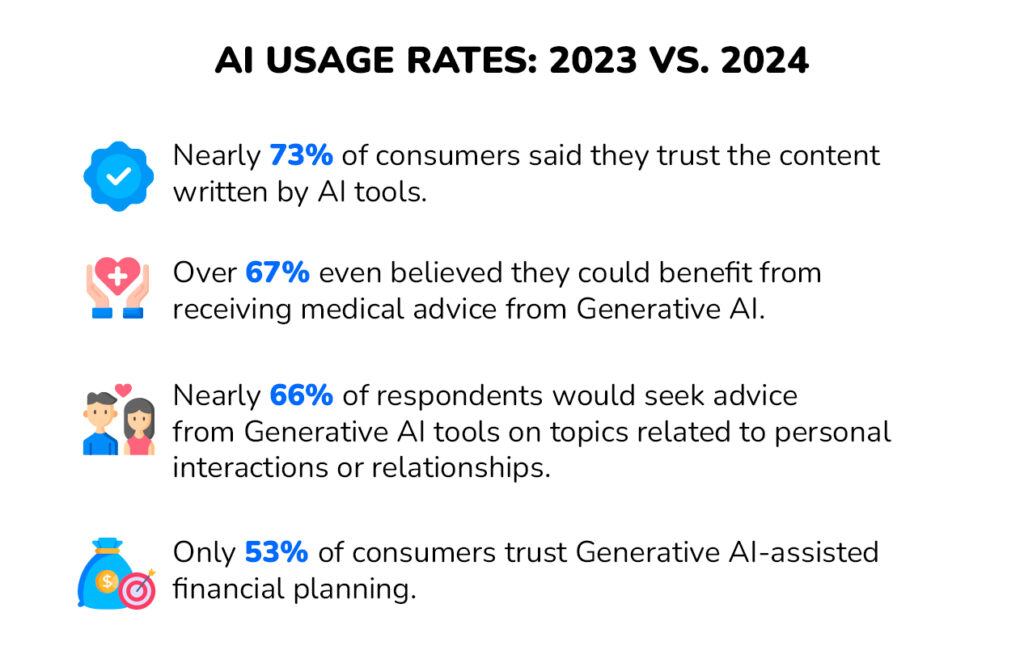
Although, the level of trust for AI-generated content is high, a lof of people are still cautious about it:
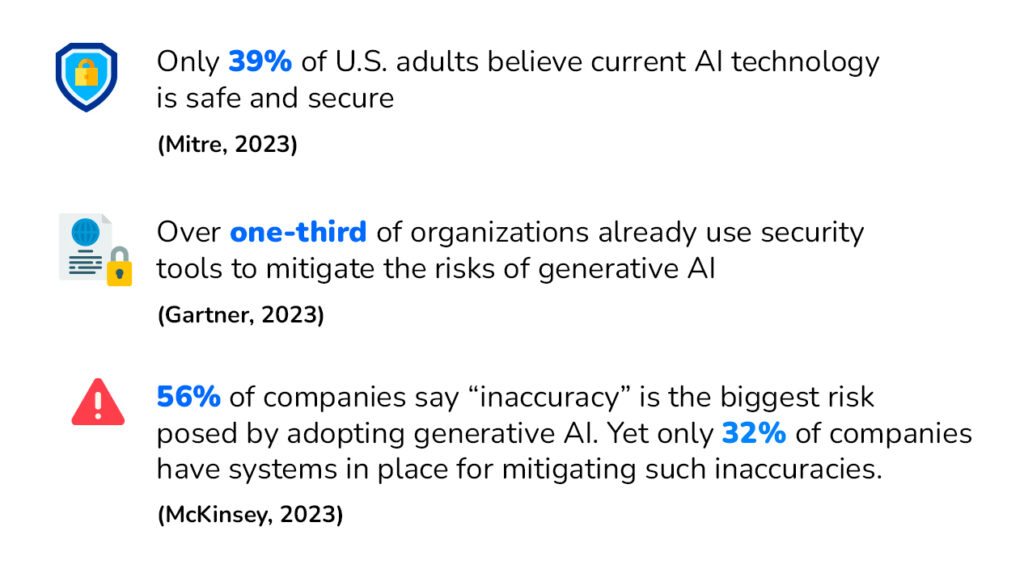
And then there is an ongoing social debate about AI being trained on copyrighted content, privacy, cybersecurity and identity theft concerns.
The Need for Human Editing and Oversight
Because of all the above-mentioned, AI still requires a lot of human supervision for its outputs to be reliable and usable. There’s another thing: the more sophisticated AI tools become, the more dependent they are on prompt engineering for the quality of the output.
A user is required to have sufficient domain knowledge to judge whether the AI output is relevant and accurate. But they are also required to have solid knowledge of prompt design so that their input prompts return quality outputs. The more complicated and refined the output should be, the more advanced prompt design knowledge is required.
Top AI Copywriting Tools in 2025
1. Jasper AI
Features:
Generates a variety of content types: blog posts, ad copy, and social media content. Offers customizable tone config. Jasper also has a “Boss Mode” for in-depth longreads. It can be integrated with SurferSEO for various SEO-related improvements to texts.
Pros:
- Good for working with standardized content types, flexible.
- Strong SEO integration.
- Easy-to-use templates.
Cons:
- Requires editing for highly accurate or creative tasks.
- On the expensive side as compared to some alternatives, especially for premium features.
Pricing:
- Starter plan: around $40/month
- Boss Mode: approximately $82/month
- Custom plans available for enterprises.
2. Copy.ai
Features:
Automation of standard text types such as landing pages, product descriptions, and emails. THis tool has collab features for teams and content libraries. An “Inspiration Mode” feature for ideation.
Pros:
- Affordable and versatile, food for small businesses.
- Focus on automation of prep and repetitive tasks
- User-friendly templates.
Cons:
- Too generic for niche outputs.
- Limited advanced SEO options compared to other tools.
Pricing:
- Free plan with limited features
- Pro plan: $36/month for full access
- Custom pricing for larger businesses.
3. Writesonic
Features:
Writesonic is a solid tool for creating standard landing pages, ads, and short-form copy using its AI-driven templates. It also has a longread editor which could be used for content like blog posts. Supports 25+ languages.
Pros:
- Reasonably priced.
- Good localization support.
- SEO optimizer available in premium plans.
Cons:
- Nuanced and niche topics come out too generic
- Requires a lot of fine-tuning for specific industry lingo.
Pricing:
- Basic: $19/month
- Professional: $49/month
- Enterprise plans available upon request.
4. Grammarly
Features:
Grammarly started out as a spell checker, but today it’s a powerful tool to brush up your text. Aside from spell and grammar check, can be used for tone adjustments, plagiarism detection, readability improvement.
Pros:
- Focused on text enhancement, not generation.
- Excellent for refining AI-generated text, especially for grammatical accuracy.
- Integrates with many applications (email, social media, web browsers).
Cons:
- Limited actual content generation functionality.
- A very limited free version.
Pricing:
- Free version with basic checks
- Premium: around $12/month
- Business plans available for teams.
5. QuillBot
Features:
Quillbot is useful for rewriting, paraphrasing, and summarizing. It comes as a browser extension and integration with Google Docs.
Pros:
- Effective when you need to create rewrites of existing content
- Simple interface
- has an in-built AI detector
Cons:
- Limited features.
- Output fluidity and coherence is often low-quality.
Pricing:
- Free version with basic features
- Premium: $9.95/month or $49.95/year
6. Hypotenuse AI
Features:
This AI tool is designed specifically for e-commerce with an emphasis on product descriptions and blog posts. Great when you need to batch-create hundreds of product listings for Amazon or other marketplaces. Has an AI research assistant for idea generation.
Pros:
- Excellent features for product-heavy sites.
- Batch feature saves a lot of time for working with inventories.
- Clean, user-friendly interface.
Cons:
- Of little use outside e-commerce-related tasks.
- Higher pricing because of its niche focus.
Pricing:
- Starter: around $29/month
- Growth: approximately $59/month
- Custom plans for larger e-commerce businesses.
7. HubSpot AI Content Writer
Features:
This tool is a part of HubSpot’s marketing platform, and can be used to generate standard, non-specific texts for social media and blogs. It has good features for content repurposing for different channels. A fine addition for businesses that are already using HubSpot’s CRM, marketing, or CMS systems.
Pros:
- Native integration with HubSpot’.
- Improves all workflows within the HubSpot ecosystem.
- Great for quick social media and blog post ideation.
Cons:
- No sense in using outside of HubSpot’s ecosystem.
- Less advanced AI capabilities compared to dedicated content tools.
Pricing:
- Included in HubSpot Marketing Hub plans, starting around $45/month.
Best Free AI Copywriting Tools
If subscribing to an AI tool is above our budget, there are free AI tools that you can use, as well as free versions of paid for tools. Let’s take a look at those.
- ChatGPT
ChatGPT is often considered the pioneering AI tool and is extremely versatile. OpenAI releases updates quite often, and version 4 which was available on a paid plan only several months ago, is now available for free.
ChatGPT is highly sensitive to the quality of input prompt and can be used for a variety of writing tasks. It is great for brainstorming, research and ideation.
Example: ChatGPT works perfectly well for tasks like:
- Create ten variants of a catchy, marketable name with a pun for an article about (article contents)
- I’m going to feed you the text. It’s not formatted and hard-to-read. Format and improve its structure using clear paragraphs, bullet lists, headers and subheaders. Suggest readability corrections with explanation for each suggestion
- Create 10 key takeaways for the text below (text body)
However, when you generate a text, even the paid for version of ChatGPT (currently 4o) uses very similar patterns for particular text formats. This makes the AI very easily recognizable and easily picked up by various AI detecting tools. Even when you actually edit a ChatGPT-generated output, chances are, an AI detector will still scream bloody murder after you run your edited text through it. Unless, of course, you completely remake the text structure itself. Which essentially is creating a totally different text.
Free Version vs. Paid
The free ChatGPT version is fully capable of translation, summarizing, analysis, drafting, outlining and ideation.
The paid ChatGPT version includes canvas and image generation as well as improved outputs and better contextual understanding.
Limitations:
The free version of ChatGPT is not up-to-date with the recent content, so it is not good if you’re working with topics that are very recent. For instance, ChatGPT 3.5 was trained only on content prior to the year 2022. Even the paid for version isn’t entirely up-to-date with recent events.
Another issue many writers are having with ChatGPT is inaccuracy and often incorrect assumptions. You have to feed it a lot of context and do it in a specific way and order for it to consider it.
- Perplexity AI
A great free tool for information research. It creates a summary (you set the level of details) of your query and cites a variety of sources, which is its biggest advantage. Invaluable when you need to name your sources, place quotes and fact-check. In fact, it is a perfect blend between a search engine and a writing tool.
Example: Working prompts for Perplexity.ai look like this
- I need a series of FAQ answers with sources for following questions (list of questions)
- Find me statistics with graphs that illustrate trends for the use of AI in content marketing
- Give a list of top-ranking materials on the topic of (topic)
How to Use Effectively Without a Subscription
Use it for quick understanding of complex topics. Perplexity.ai is very good at ‘explain it to me like I’m five’ answers, citing reputable and relevant sources. You can also refine and expand the output by using the free ‘follow-up question’ feature.
Limitations:
It is not a content generating tool per se. Perplexity is primarily designed as a very fine-tuned search engine that looks up and cites articles and publications. It may not offer the necessary level of contextual depth and is pretty insensitive to prompts with tone of voice requirements.
- ZeroGPT
If you heavily rely on AI in your content creation process, this tool is a must. AI is used for content when a copywriter is expected to produce content in bulk or for purposes other than recreational reading. Like content marketing, SEO and brand promotion.
This usually means, you optimize your content for search engines. Like we mentioned above, Google does pessimize AI-generated texts.
ZeroGPT analyzes up to 15,000 characters for free.
Keep the following in mind when working with ZeroGPT and AI detectors:
- If your text is heavy on terms, set expressions and professional lingo, even human-written text can get picked up as AI-generated
- Smaller parts of text can show higher AI percentage than an entire text
- ZeroGPT uses sensitive algorithms, you can get a different result if you run the same text twice
- You can change only a few words, switch paragraphs or change line spacing, but your AI score may change quite dramatically
If you’re writing texts that aren’t used for SEO, but, for instance, are intended to be published in media, AI use restrictions can be even more strict. AI-generated content, be it an image or text, can be literally considered to have zero value if the AI part is easily recognizable.
This is especially true about images that are used for aesthetic purposes and texts that are valued for a unique take and informational impact. Most serious media consider texts with more than 25% AI failed and wouldn’t accept texts with more than 10%.
How to Maximize the Use of AI Copywriting Tools
As you can see, the use of AI tools for writing has its challenges and limitations. It doesn’t mean, however, that you they can’t make a copywriter’s life a lot easier. If you want AI tools to do work for you, not to add more work, follow these best practices.
- Use AI for Brainstorming and Idea Ideation
AI is perfectly capable of boosting your creativity, gathering info, providing prompts, making outlines and structures, leaving the most enjoyable part to you: actual writing.
- Use AI to optimize Copy for SEO
It being a technical aspect of writing, AI handles it very well. Moreover, the use of AI reduces the chance of human error and gives precise outcomes: if you say that the keyword frequency in a text shouldn’t exceed 1.5%, AI will make it exactly so.
- A/B Testing with Multiple Versions of Content
There’s much followup work that can be automated after the original piece of text content is done. AI can perform various tests, readability analysis, suggest improvements and create versions. If you wrote a research white paper, AI is great for making a summary for social media, a call-to-action post or a landing page text where your users can download it.
- Fact-Check and Edit All AI-Generated Content
If you have to rely on AI-generated text, make sure you edit it, run it through an AI detector and thoroughly fact-check it. Remember, accuracy, uniform speech constructs and poor contextual understanding are the biggest drawbacks of AI-generated text.
- Maintain a Consistent Brand Voice
It’s great if your brand book includes a style guide for all of your text content. A well-documented tone-of-voice and style guide instructions are a commercial copywriter’s best friend. They should be easy to follow and consistent across all of your texts. In this case, editing AI-generated texts will be much easier.
Conclusion:
At first glance, it may seem that generating a piece of text with an AI tool is a piece of cake. To someone who’s not come across AI-generated texts a lot, such content may even seem reliable, well-written and very readable. However, using AI for copywriters comes with its own set of challenges and limitations. Still, the proper use of AI tools can greatly speed up and improve the work of any copywriter. Use the guidelines and best practices from this article to make AI a valid assed in your copywriting work.






